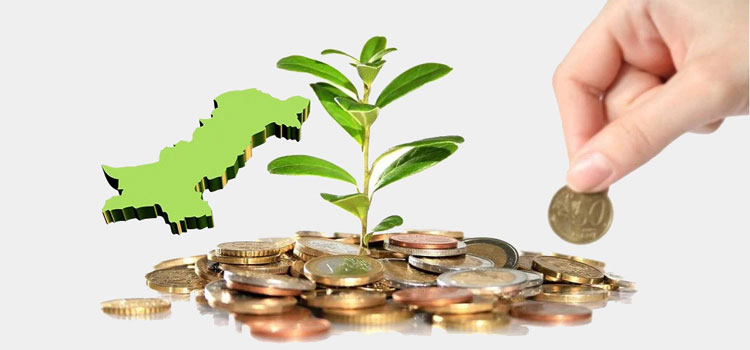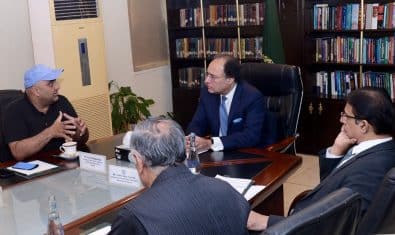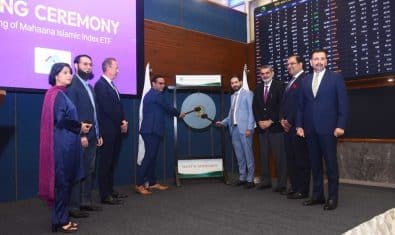Until recently, Govind, a father of three, was one among the millions of Pakistanis living in poverty. A native of Badin, Sindh his life had been spent struggling to provide three square meals a day for his family.
This type of struggle has been a familiar theme in Govind’s life. When he was a boy, Govind learned early on the disappointment and struggle that comes with poverty. Govind recalls the time when as a child he aspired to become a schoolteacher.
Tough financial times and responsibilities at home deprived him of the opportunity. Coming from a minority community didn’t help matters much. He was certain that his children would face the same fate of grinding poverty without access to education if he didn’t act and act fast.
According to the recently released Multidimensional Poverty Index (MPI), 39 per cent of the population in Pakistan lives in multidimensional poverty. Multidimensional Poverty is a rather new concept introduced in 2010 that uses different factors to determine poverty beyond income-based lists – such as poor health, lack of education, inadequate living standard, lack of income (as one of several factors considered), disempowerment, poor quality of work and threat from violence.
More than fifty percent of Pakistan’s population that is caught up in multidimensional poverty lives in the rural areas. And though some progress has been made with a decline in the overall level of poverty in Pakistan, it is still one of the more pressing social and economic issues hindering development.
“Our father has worked hard all his life. He did his best to meet the needs of the family. He worked for 35 years in a shoe manufacturing shop but despite all that he gave, he could never save anything for himself or for his family.” Govind reminisces about his childhood.
“When we relocated from the village, we only had 70 rupees and my father’s shoemaking skills. Initially, a few of relatives supported us but they were also poor people. I soon realized that I had to do something. That is when I decided to start my own business of making chappals and convinced my father to help me. I only had one big road block; I had no money.” He chuckles realizing the impossibility of his plans as it looked back then.
In 2007, a field loan officer from Khushhali Bank approached Govind, whose shoemaking business had yet to come into fruition. A partner in the USAID funded U.S.-Pakistan Partnership for Access to Credit, Khushhali Bank is a part of Pakistan’s Poverty Reduction Strategy and its Microfinance Sector Development Program.
Micro-financing is proven to successfully trigger upward social and economic mobility in the population stuck at the bottom of the economic pyramid by providing small-scale loans to businesses deemed unfit for commercial banking. Without access to credit, entrepreneurs like Govind are unable to make a profit.
Traditionally, commercial banks consider the small and medium size business sector as too risky an investment. The limitations in commercial banking renders leveraging formal financing routes improbable for micro and small entrepreneurs and perpetuates their dependence on informal and often exploitative informal mechanisms of lending and borrowing.
Nearly three million of the 3.2 million businesses in Pakistan belong to this sector contributing, more than 30 per cent to Pakistan’s gross domestic product. Limited access to credit hinders this sector from growing the economy. Furthermore, about 80 per cent of Pakistan’s population does not have access to financial services at commercial banks. Microfinance is a targeted strategy to bring about a sustainable change in the lives of millions by providing opportunities to start and grow their own businesses.
In order to make micro-credit work, one has to keep some challenges in mind. The majority of potential borrowers live in remote and rural areas which are often difficult to access. Many don’t even have a permanent address. Most are either illiterate or semi-literate. Because microfinance institutions are not seeking to make a profit, they are well-positioned to absorb the high costs of doing business with such borrowers.
Khushhali Bank provided Govind, a first time borrower, an opportunity to obtain a loan of Rs10,000 to start his shoe-making venture. The new business owner was relieved to have found this breakthrough.
“We are our own masters now. In the past, we only earned enough money to make it to the weekend. With my loan, I went to Hyderabad to buy enough material to make more than one pair of shoes. I bought a machine, and hired two employees. I made 10 pairs and was able to charge 100 rupees per shoe. Even after accounting for my household costs, I had 500 rupees to buy leather as an investment in the business.”
USAID has partnered with local banks to provide up to US $60 million in loan capital to micro, small and medium businesses. In the last three years, USAID programs have helped create 23,000 jobs and provided business development services to more than 85,000 micro, small and medium enterprises in Pakistan.
“From Khushhali Bank my first loan was for a mere 10,000 rupees. Timely payments have enabled me to maintain a good customer relationship with the bank. As a result, my loan ceiling was increased and just recently they approved a loan of Rs125,000 for me.”
Govind shares “My business is doing fairly well now. I sell my chappals in the local market, and even in Karachi, giving me financial stability. My children are going to school now. My daughter is in class 7 and my son is in class 2. My newest born will be a year old soon. I am looking forward to him attending school too. So what if I wasn’t able to study? Now we dream that our children will study,” he concludes with a smile.
Govind is testament to what happens when hardworking Pakistanis are given an opportunity to lift themselves out of poverty. Given the right support, an individual and a family can transform its future. So whilst poverty in Pakistan remains a pressing social problem, Govind’s story shows us a potential solution.



























Good Going Govind. An motivational story. Rather inspirational.
Where is the I.T. Part in this story to be published on propakistani. Pk?